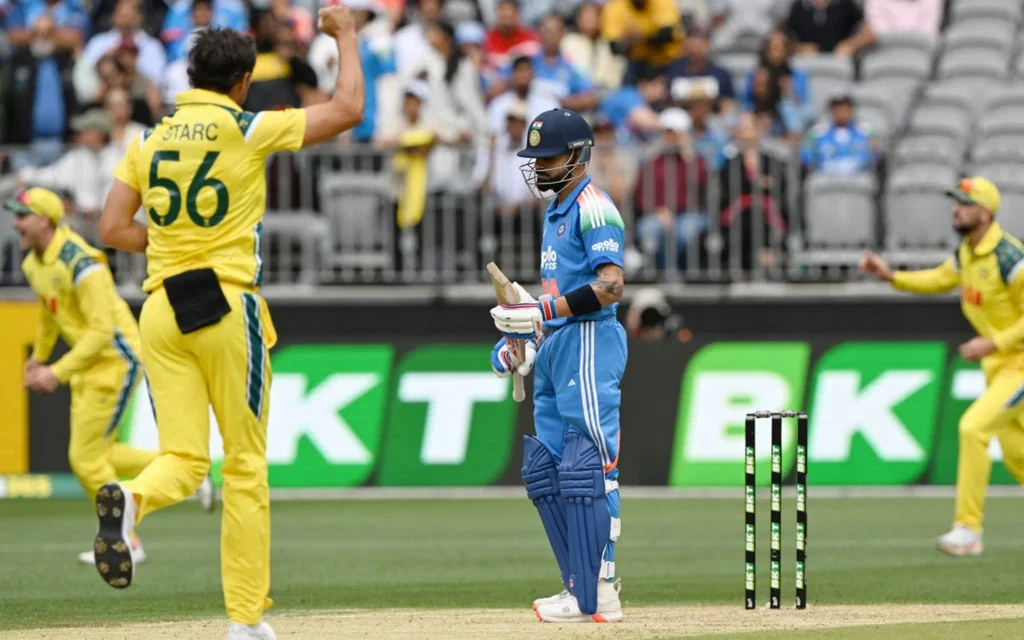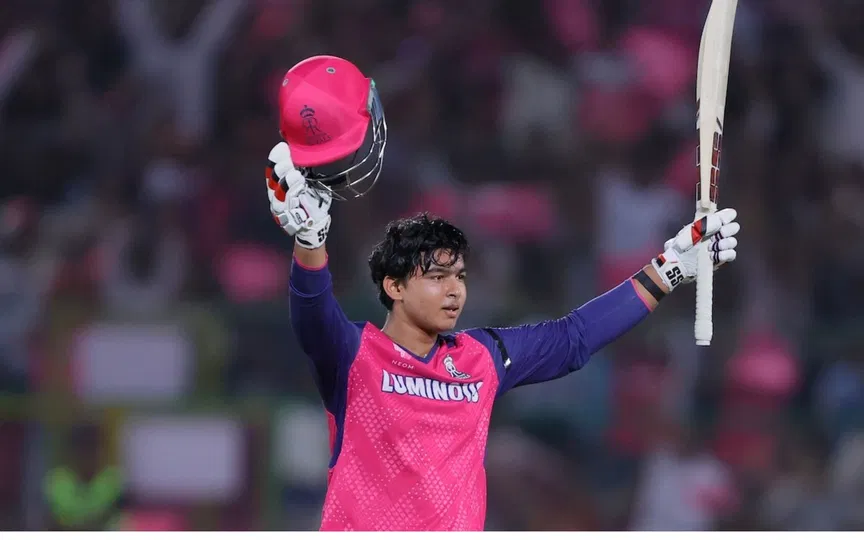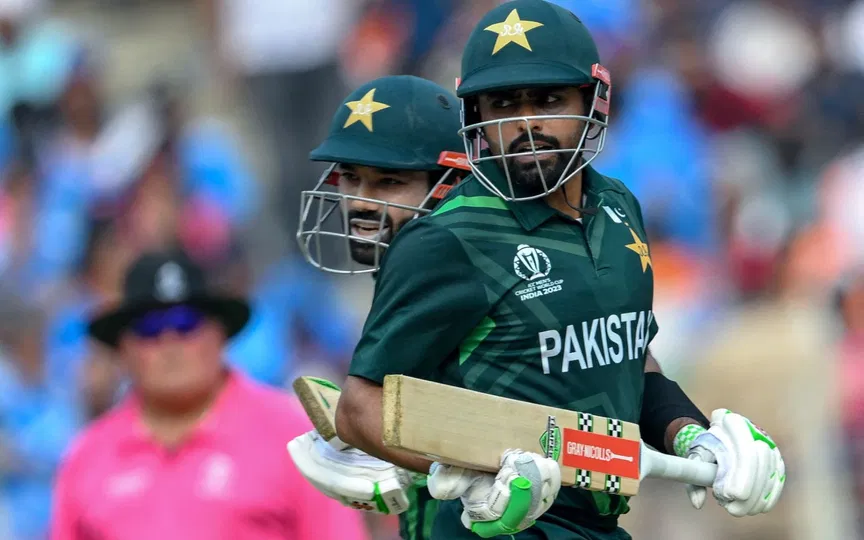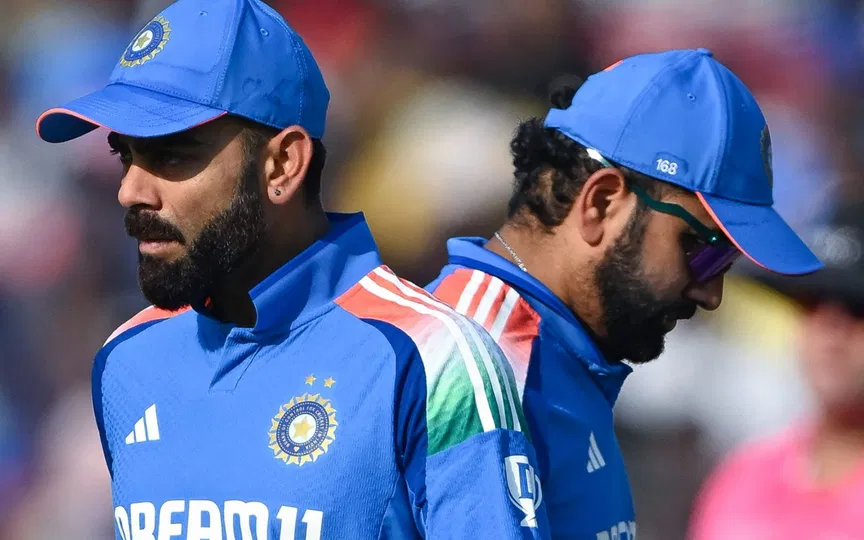 Virat Kohli after losing wicket vs Starc (Source: AFP)
Virat Kohli after losing wicket vs Starc (Source: AFP)
The much-awaited ODI series between India and Australia is underway in Perth, and the home team is off to a brilliant start. In overcast conditions, with rain halting proceedings at regular intervals, Australian pacers displayed their class and India have been reduced to 45 for four.
India's ODI batting dominance and reality of 50-over format
The top four Indian batters - Rohit Sharma, Shubman Gill, Virat Kohli and Shreyas Iyer are all back to the hut, and it is a kind of collapse that has haunted India in past and can be troublesome in the 2027 World Cup as well. Overall, India have been a strong force in ODI cricket and all the top four batters who lost their wicket early have been prolific in the format.
They tend to score big runs every now and then, and without doubt have found the formula to succeed in the 50-over format regularly. Generally, the pitches are pretty flat in the 50-over format all over the globe, but there are some odd games where the conditions can be tough.
The batting was tough in the Champions Trophy too, and the batters had to apply themselves. However, those were not the conditions where the ball was swinging and seaming, and it was more about adjusting to the slow and turning wickets. Thus, Indian batters adapted better and came out with flying colours.
A dark spot for India's prolific ODI batting group
However, the problem for India's top-order in ODI cricket over the years has arrived where the pacers have got the movement upfront. Thus, Indian batters found themselves in the deep water at the Optus Stadium with world-class bowlers like Mitchell Starc and Josh Hazlewood coming hard at them in the overcast conditions.
Both Rohit Sharma and Virat Kohli have been found wanting when the ball is seaming and swinging, not only in ODIs but also in Tests. Now, in this game, the conditions allowed Josh Hazlewood and Mitchell Starc to use that Test length, and it helped them get the better of two batters.
Kohli's weakness outside off while driving was exploited by Starc, while Hazlewood bowled in the corridor of uncertainty to remove Rohit. Shreyas was outfoxed by the movement and shortish length, while Gill too got stranded down the leg side. In 2023, when Australia travelled to India, the pacers got movement in Visakhapatnam, and Mitchell Starc destroyed the home team with his vicious swing.
The Perth collapse, a warning ahead of 2027 World Cup
The same problem led to India's famous downfall in the 2019 World Cup semifinal. The conditions were overcast then, and the likes of Trent Boult and Matt Henry made the Indian top order dance to their tunes. The same collapses have led to some heartbreaking losses for India in Test cricket, where those 45 minutes of bad cricket have pinned India down multiple times. In the 2027 World Cup in South Africa, India could encounter such tough conditions again.
The pattern of India's top-order collapses is clear - overcast conditions, help off the deck for the pacers and quality bowling attack. The conditions for white-ball cricket in South Africa are generally good for batting, and we can expect Indian batters to score big runs. However, just like Australia, there can be extra bounce in South Africa and movement off the deck even in some white-ball matches. So, if the opposition works closely on the pattern of India's losses and collapses, they might try to utilise it against India, and it could lead to another World Cup heartbreak.
Thus, a strong and champion team like India need to work out this Achilles heel, which, despite having some world-class batters in their arsenal, has haunted them for many years now.
.jpg)



.jpg?type=mq)
